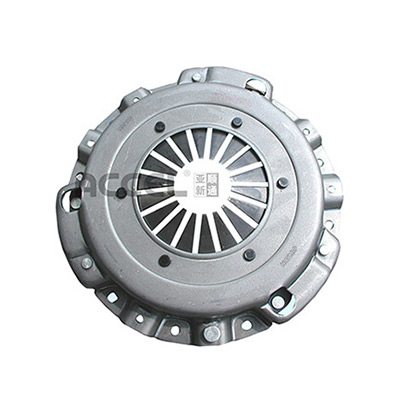- Arabic
- French
- Russian
- Spanish
- Portuguese
- Turkish
- Armenian
- English
- Albanian
- Amharic
- Azerbaijani
- Basque
- Belarusian
- Bengali
- Bosnian
- Bulgarian
- Catalan
- Cebuano
- Corsican
- Croatian
- Czech
- Danish
- Dutch
- Afrikaans
- Esperanto
- Estonian
- Finnish
- Frisian
- Galician
- Georgian
- German
- Greek
- Gujarati
- Haitian Creole
- hausa
- hawaiian
- Hebrew
- Hindi
- Miao
- Hungarian
- Icelandic
- igbo
- Indonesian
- irish
- Italian
- Japanese
- Javanese
- Kannada
- kazakh
- Khmer
- Rwandese
- Korean
- Kurdish
- Kyrgyz
- Lao
- Latin
- Latvian
- Lithuanian
- Luxembourgish
- Macedonian
- Malgashi
- Malay
- Malayalam
- Maltese
- Maori
- Marathi
- Mongolian
- Myanmar
- Nepali
- Norwegian
- Norwegian
- Occitan
- Pashto
- Persian
- Polish
- Punjabi
- Romanian
- Samoan
- Scottish Gaelic
- Serbian
- Sesotho
- Shona
- Sindhi
- Sinhala
- Slovak
- Slovenian
- Somali
- Sundanese
- Swahili
- Swedish
- Tagalog
- Tajik
- Tamil
- Tatar
- Telugu
- Thai
- Turkmen
- Ukrainian
- Urdu
- Uighur
- Uzbek
- Vietnamese
- Welsh
- Bantu
- Yiddish
- Yoruba
- Zulu
Dec . 03, 2024 15:57 Back to list
Ribbed Belts for Honda Vehicles Maintenance and Replacement Guide
Understanding the Importance of a Ribbed Belt for Honda Vehicles
When it comes to automotive maintenance, one component that often goes overlooked is the ribbed belt, also known as the serpentine belt. This essential part plays a critical role in the overall functioning of the vehicle, especially for Honda models. In this article, we will explore what a ribbed belt is, its importance, how to identify if it needs replacement, and tips for maintaining it to ensure your Honda runs smoothly.
What is a Ribbed Belt?
A ribbed belt is a single, continuous belt made from durable rubber and features grooves that allow it to grip the pulleys of various engine components. It’s designed to drive multiple peripheral devices in the engine, such as the alternator, power steering pump, water pump, air conditioning compressor, and sometimes even the engine cooling fan. The ribbed design helps improve traction and reduces the risk of slipping, thereby allowing for efficient power transmission from the engine to these vital components.
In Honda vehicles, the ribbed belt is engineered to withstand high levels of tension and wear that come from the constant movement and friction in the engine compartment. Given the varied driving conditions and environmental factors that every vehicle faces, it’s paramount to understand the wear and tear that can occur over time.
Importance of Regular Inspection
The ribbed belt is often referred to as the heart of your vehicle's accessory drive system. A dysfunctional or worn-out belt can lead to serious complications. For instance, if the belt breaks, it can result in the loss of power steering, overheating due to a non-functional water pump, and failure of the alternator, leading to battery drain. Such failures not only affect the driving comfort but also pose safety risks.
For Honda owners, it’s essential to routinely inspect the ribbed belt—typically every 30,000 to 50,000 miles or as recommended in your vehicle's owner’s manual. Signs of wear can include fraying edges, cracks, or a squeaking noise when the engine is running. If you notice any of these symptoms, it’s crucial to replace the belt immediately to prevent further damage to engine components.
ribbed belt for honda

Replacement Process
Replacing a ribbed belt is a relatively accessible task for those familiar with automotive maintenance. Here’s a simplified process
1. Safety First Ensure your vehicle is parked on a flat surface and the engine is cool. 2. Locate the Ribbed Belt Reference your owner’s manual to find the belt routing diagram, typically located near the engine compartment. 3. Release Tension Use a wrench to rotate the tensioner pulley, relieving tension on the belt. Carefully slip the belt off the pulleys. 4. Install the New Belt Following the routing diagram, install the new belt ensuring that it sits properly within all grooves. 5. Check Tension Ensure the tensioner is properly engaged, and the belt is tensioned correctly. 6. Final Inspection Start the engine and listen for any unusual sounds, ensuring smooth operation.
Maintenance Tips
To prolong the life of your ribbed belt and ensure it operates effectively, consider the following maintenance tips
- Regular Inspections Inspect the belt regularly, looking for signs of wear or damage. - Cleanliness Keep the engine compartment clean. Dirt and debris can cause premature wear of the belt. - Alignment Check Ensure that all pulleys are aligned correctly. Misalignment can lead to belt wear and failure. - Monitor Temperature Excessive heat from the engine can deteriorate the belt. Address any cooling issues promptly. Conclusion
The ribbed belt is a vital component in Honda vehicles, responsible for powering multiple accessories that enhance the driving experience. Neglecting its maintenance can lead to significant, expensive repairs down the line. By understanding the role and importance of the ribbed belt and adhering to a regular inspection and maintenance schedule, Honda owners can ensure the longevity and reliability of their vehicles. Remember, taking care of your ribbed belt today can prevent costly inconveniences tomorrow, allowing you to enjoy a safe and smooth ride on the road.
-
Precise Timing Belt Operation: Function & FAQ Guide
NewsAug.10,2025
-
Precision Double-Sided Toothed Endless Flat Drive Belts
NewsAug.09,2025
-
Durable Tooth Belts: Precision Power for Poly V Belt Drives
NewsAug.08,2025
-
Reliable Diesel Engine Belts & Tensioners for Optimal Performance
NewsAug.07,2025
-
23100-KVB-901 Drive Belt for Honda VARIO | OEM Performance
NewsAug.06,2025
-
Variable Belt Drive AI Optimized for Efficiency
NewsAug.05,2025

